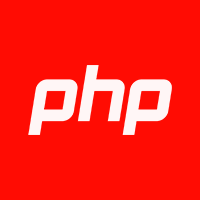-

- 动态缓存键在 Spring Boot 中的应用
- 本文介绍了如何在SpringBoot应用中实现动态缓存键。通过直接操作CacheManager获取Cache对象,并使用cache.get(key,()->...)方法,可以根据请求参数动态生成缓存键,从而灵活地缓存数据。虽然缓存名称保持静态,但缓存键的动态性足以满足大多数需求。
- 后端开发 . spring-boot 426 2025-09-09 19:43:01
-

- 动态缓存键配置:Spring Boot缓存的灵活应用
- 本文旨在介绍如何在SpringBoot应用中实现基于请求参数的动态缓存键配置。通过直接操作CacheManager,我们可以绕过@Cacheable注解的静态限制,实现更灵活的缓存策略,从而优化性能并提升用户体验。本文将提供详细的代码示例和使用说明,帮助开发者理解和应用这种动态缓存配置方法。
- 后端开发 . spring-boot 412 2025-09-09 19:01:23
-

- 动态缓存键值配置:Spring Boot 缓存管理的灵活应用
- 本文旨在介绍如何在SpringBoot中实现基于请求参数动态设置缓存键值的功能。通过自定义缓存管理方式,开发者可以灵活地控制缓存行为,从而优化应用程序的性能。本文将详细讲解如何利用CacheManager直接操作缓存,实现动态键值缓存,并提供示例代码和注意事项。
- 后端开发 . spring-boot 215 2025-09-09 19:01:12
-

- 动态缓存键在Spring Boot中的实现教程
- 本文介绍了如何在SpringBoot应用中实现基于请求参数的动态缓存键。通过直接操作CacheManager获取缓存对象,并使用cache.get(key,()->...)方法,可以灵活地根据请求参数生成缓存键,从而实现更精细化的缓存控制。这种方法避免了直接修改缓存名称,而是专注于动态生成缓存键,更符合实际需求。
- 后端开发 . spring-boot 178 2025-09-09 18:53:01
-

- 动态缓存键配置:Spring Boot 缓存管理的灵活应用
- 本文介绍了如何在SpringBoot中实现基于请求参数动态生成缓存键的策略。通过直接操作CacheManager获取Cache对象,并使用cache.get(key,()->...)方法,可以灵活地控制缓存的读取和更新,从而实现更精细化的缓存管理。这种方法避免了直接动态修改cacheNames的复杂性,提供了更简洁、可维护的解决方案。
- 后端开发 . spring-boot 954 2025-09-09 18:41:01
-

- 【Nacos系列第一篇】-Nacos之Spring Discovery
- 作者:毕来生微信:878799579前言个人比较看好SpringCloudAlibaba家族。此系列以Nacos为主题,从Spring、Springboot、SpringCloud多个方面逐步进行演示,源码解读。目前来看官方文档还有待完善。网络上除了官网外缺少Nacos系列文章。都是零零散散的知识点。如此系列文章哪里写的有不周全,错误之处。欢迎大家指正。谢谢。因公众号排版问题,可能会有代码显示不完整,请使用电脑版微信内置浏览器/复制链接到浏览器中。1、Nacos是什么?服务发现和
- 后端开发 . spring-boot 571 2025-09-09 09:03:18
-

- 使用Flyway或Liquibase进行MySQL数据库版本控制与迁移
- 数据库版本控制工具Flyway和Liquibase通过将Schema变更代码化,实现自动化、可追溯的迁移管理。Flyway以简洁和SQL优先著称,适合小型项目和SQL熟练团队;Liquibase提供多格式支持与回滚能力,适用于复杂企业级或多数据库环境。两者均需集成至构建工具(如Maven/Gradle),并通过配置连接信息执行迁移。关键实践包括避免硬编码凭据、处理并发冲突、谨慎管理回滚及始终备份生产数据,确保迁移安全可靠。
- 后端开发 . spring-boot 316 2025-09-09 08:21:01
-

- 使用Jackson解析Double类型:处理字符串和数值格式
- 本文旨在解决在使用Jackson库解析Double类型时,遇到的字符串和数值格式兼容性问题。通过统一Jackson依赖版本,可以确保Double类型字段能够同时解析字符串和数值格式,避免因版本不兼容导致的NoSuchFieldError异常。
- 后端开发 . spring-boot 463 2025-09-08 19:35:17
-

- Spring Boot 应用:分离 REST API 和 Web 应用的最佳实践
- 本文旨在探讨在SpringBoot项目中,如何有效地分离RESTAPI和Web应用程序。针对小型项目,建议保持简单,将代码放在同一模块的不同包中。对于大型项目,则需要考虑可伸缩性、团队协作和性能需求,将前后端分离成两个独立的SpringBoot应用。文章将深入分析不同场景下的架构选择,并提供相应的技术建议,帮助开发者做出最合适的决策。
- 后端开发 . spring-boot 585 2025-09-08 18:00:21
-

- 在Spring Boot应用中配置多数据源(Multiple MySQL DataSources)
- 配置多数据源需为每个数据源独立定义连接属性、数据源实例、实体管理器工厂和事务管理器,通过@Primary标注主数据源,@EnableJpaRepositories指定各自包路径实现隔离,确保事务管理器与数据源一一对应,并在@Service中用@Transactional("xxxTransactionManager")显式指定事务管理器以保障事务独立性。
- 后端开发 . spring-boot 955 2025-09-08 12:36:01
-

- 获取Resource中JSON的方法
- SpringBoot是由Pivotal团队开发的一款创新性框架,致力于简化Spring应用的初始化与开发过程。它通过独特的自动化配置机制,有效减少了传统开发中的重复性代码,让开发者可以更加聚焦于核心业务功能的实现。秉承“约定优于配置”的设计思想,SpringBoot显著提升了开发效率,支持快速搭建独立且可投入生产的Spring项目,因此在微服务和云原生应用开发中被广泛采用。凭借其轻量、高效以及良好的生态系统集成能力,SpringBoot已成为现代快速应用开发的首选框架,帮助开发者敏
- 后端开发 . spring-boot 914 2025-09-08 08:26:16
-

- 什么是 spring boot?
- SpringBoot通过自动配置、起步依赖和内嵌服务器简化Spring应用开发。它根据引入的依赖自动配置Bean,如引入spring-boot-starter-web时自动配置Web组件;起步依赖将常用依赖打包,避免版本冲突;内置Tomcat等服务器,支持java-jar直接运行。开发者可使用SpringInitializr快速生成项目,编写REST接口并运行。尽管存在自动配置难排查、依赖冗余等问题,但其优势显著。
- 后端开发 . spring-boot 313 2025-09-08 08:18:01
-

- spring 事务实现方式有哪些?
- Spring事务主要分为编程式和声明式两大类,前者通过PlatformTransactionManager或TransactionTemplate在代码中手动控制事务,后者通过@Transactional注解结合AOP实现事务管理,具有低侵入性和高可维护性,是现代Spring应用的首选方式。
- 后端开发 . spring-boot 347 2025-09-08 08:00:06
-

- 解决Spring Data JPA中接口默认方法覆盖失效问题
- 本教程深入探讨在SpringDataJPA应用中,当接口定义了默认方法且其实现类进行了覆盖时,SpringAOP代理可能错误地调用接口默认方法而非实现类方法的场景。我们将分析该现象的根本原因,并提供两种有效的解决方案:通过@Qualifier注解明确指定注入的Bean,或直接按实现类类型进行依赖注入,以确保正确的方法调用。
- 后端开发 . spring-boot 734 2025-09-07 12:42:01
-

- Spring Boot条件化加载Bean的实战指南
- 本文深入探讨了在SpringBoot应用中如何利用@ConditionalOnProperty注解实现Bean的条件化加载。通过重构配置类和组件定义,我们将展示如何基于外部配置动态地启用或禁用特定组件的实例化,从而优化资源使用并增强应用的灵活性,最终实现只加载所需组件的精确控制。
- 后端开发 . spring-boot 1064 2025-09-06 21:24:16

PHP讨论组
组员:3305人话题:1500
PHP一种被广泛应用的开放源代码的多用途脚本语言,和其他技术相比,php本身开源免费; 可以将程序嵌入于HTML中去执行, 执行效率比完全生成htmL标记的CGI要高许多,它运行在服务器端,消耗的系统资源相当少,具有跨平台强、效率高的特性,而且php支持几乎所有流行的数据库以及操作系统,最重要的是





























